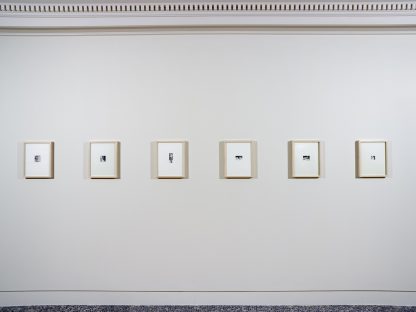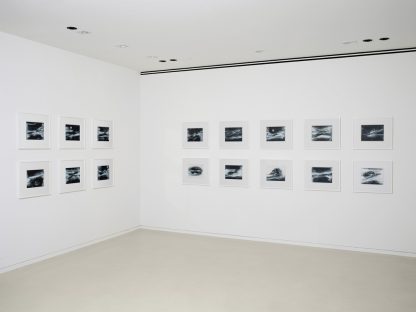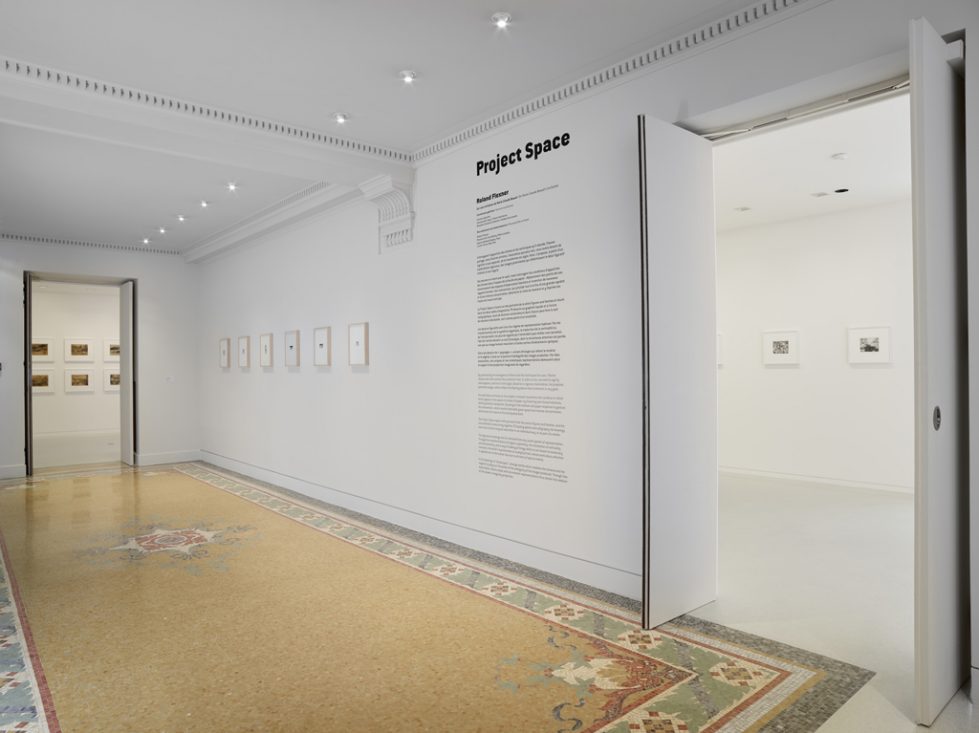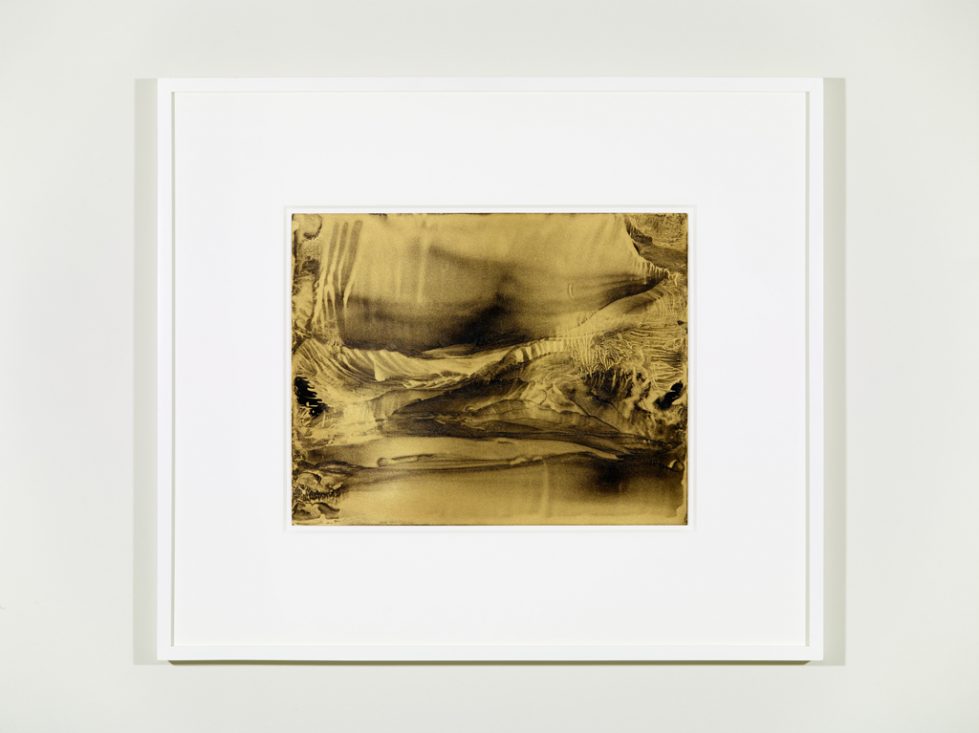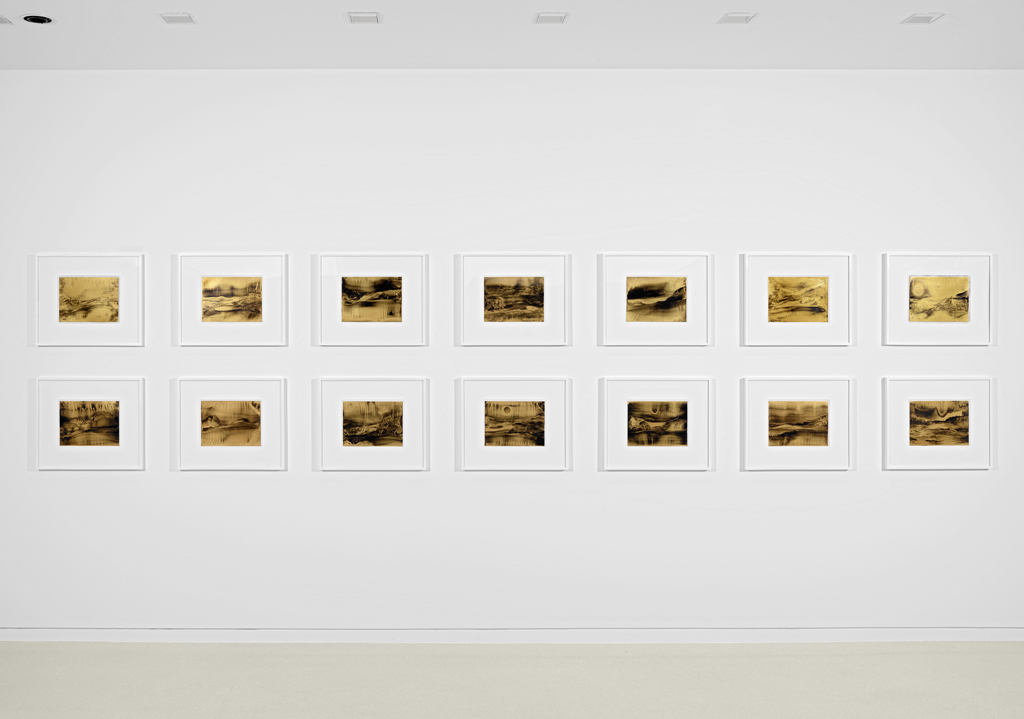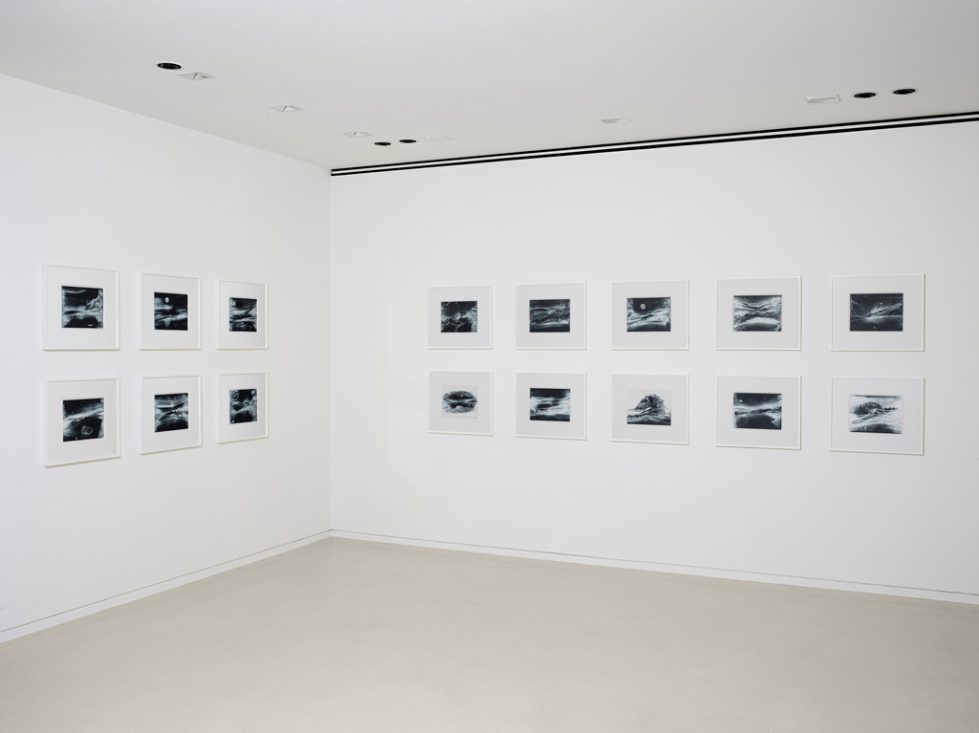Roland Flexner Project Space

Sans titre (LG33) 2011
Graphite liquide sur papier
14cm x 18cm
Courtesy of the artist.
By questioning the techniques he uses and exploring how forms are made, Flexner shares with other artists the confidence that, in order to see, we need to signify what appears, and turn it into signs. Based on a rigorous materialism, he proposes potential images, which reflect the fleeting desire that is inherent in any gaze.
His works do not focus on the subject, rather they question the conditions in which forms appear in the space of a sheet of paper: he does this by inventing new formal relations, by shifting familiar viewpoints, upsetting traditional representation.
For this show in Villa Paloma’s Project Space, Roland Flexner is presenting some 80 drawings, coming from several series (Figures and Vanitas, LGY, LGBY, GIL, LG), each one of which may be read in an individual way, or as part of a whole.
Roland Flexner’s drawings from the Figures and Vanitas series should be seen as a method which calls for a constant reversal of the way we see things. Close observation leads us to understand that we must turn our back on the identificatory and psychological empathy to which the art of the portrait has accustomed us, and which invariably takes us to the familiar form of our feelings.
The tension between the animate and the inanimate finds its full force in his “hemiplegic” portraits, which give the viewer a feeling of “uncanniness.” The faces stretched in two contradictory expressions, where one half of the face is still while the other is activated, incarnate the threshold and the almost photographic imprint of a “half-life,” somewhere between the vitality and the apparent ruin of the bodies.
In order to isolate his hand from the sheet of paper, and also so as not to leave any trace of it, he intervenes in a very delimited operational field. By working this way, the space that he discovers is one of detail. This way of going about things, which is tantamount to a kind of tactile immersion in the space of the sheet of paper, should be understood as a work that questions the emergence of forms, a work which, like the photograph, brings forth images or, more precisely in this case, a passage for a writing of the flesh.
The liquid graphite drawings, explore the way chance influences the composition of these “strange landscapes”, which due to the repetition of the process and their large number may seem similar. But grouped together in different colour ranges and material (some are made on paper covered with a thin layer of clay called “clay board,” others on Yupo paper, while still others have an ink or coloured graphite base) it is the gestures which creates the unique character of each piece.
For Flexner, these drawings are connected and echo his fascination for Picture Stones, minerals whose surfaces resemble figurative paintings. Like his drawings, these stones document the flow of organic matter, where chance once again acts, like the artist, as a creator.
These series are the extension of research developed by the artist in his Sumis drawings using a traditional Japanese method, the Suminagashi (which the artist learnt during a lengthy visit to Japan in 2004). This technique consists of diluting a mixture of gelatine and black ink in a tray full of water, and, with the ink floating on the water’s surface in fluctuating configurations, applying a sheet of paper covered with a thin layer of clay which allows it to absorb the ink marbling and mottling without smudges, recording it without excess, and fixing and stabilizing it. Once the paper is removed from the tray, the artist has just a few seconds to manipulate the images using different actions – such as blowing, vaporizing, tipping the paper, or sliding it over a piece of glass.
These interventions, which result from both great speed and intense concentration, determine the choice of the moment and imprint the traces of the anticipated work.
Roland Flexner, born in Nice in 1944 has been living and working in New York since 1981.
He is a multi-disciplinary artist who, in his early days, was close to the New Realists and the members of Supports/Surfaces. After moving to the United States he continued to develop his work around the same ethical and intellectual principles.
His works are to be found in the permanent collections of museums all over the world, including: The Metropolitan Museum of Art, New York ; Musée National d’Art Moderne, Paris ; National Museum of Modern Art, Tokyo ; Whitney Museum of American Art, New York ; The Albright Knox Museum, Buffalo; and Francois Pinault Foundation, Venice. He has also had many solo shows, and taken part in numerous group shows at, among other venues, Massimo de Carlo Gallery, London and Milan ; D’Amelio Terras Gallery, New York ; Galerie Nathalie Obadia, Paris ; Centre Pompidou Paris and Metz ; the Whitney Biennial ; the Berlin Biennial; Royal Academy of Art, London ; the Warhol Museum, Pittsburgh ; The Power Station of Art, Shanghai.
At the invitation of Marie-Claude Beaud
Bloc Contenus liés …


